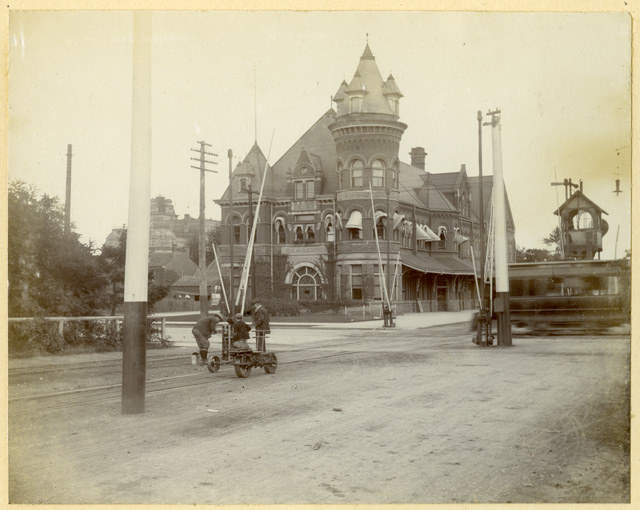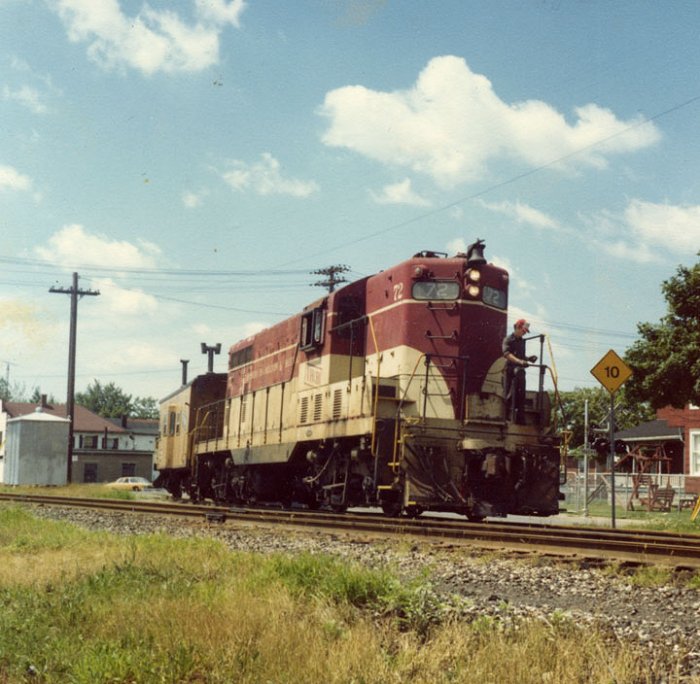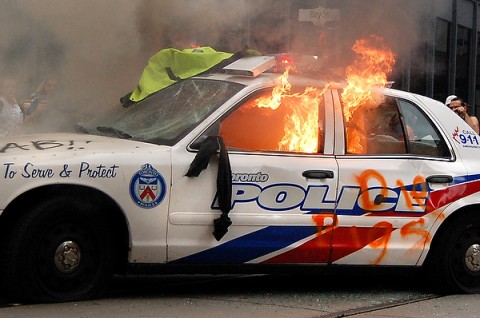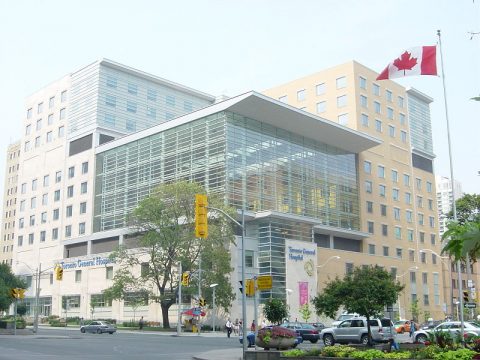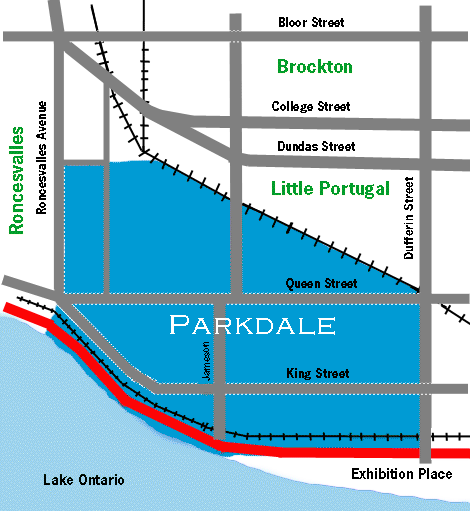Royal Canadian Navy / Marine Royale Canadienne
Published 21 Mar 2022HMCS Haida has a long and distinguished naval career of service during the Second World War, the Korean Conflict and the Cold War, that’s why Canada’s “fightingest ship” is today a National Historic Site and the ceremonial flagship of the Royal Canadian Navy.
BUT … have you heard the rest of the story?
The incredible journey of saving Haida after being decommissioned in 1963 is told as you’ve never heard it before directly from the last survivor of HAIDA Inc., the group responsible for rescuing the aging Tribal-class destroyer from the scrap heap.
March 22, 2022
The LAST Tribal-Class Destroyer — HMCS Haida
December 19, 2021
Canada’s almost functional flying saucer; the story of the Avro Canada VZ-9 Avrocar
Polyus Studios
Published 14 Jul 2018Support me on Patreon – https://www.patreon.com/polyusstudios
The Avro Canada VZ-9AV Avrocar: Canada’s first attempt at vertical take off and landing aircraft. Although the concept ultimately turned out to be a dead-end, the engineers and designers at Avro experimented with bold new ideas. Their concepts would push the limits of the imagination and reflected the extreme technological optimism of its time.
Music:
Denmark – Portland Cello ProjectResearch Sources:
“Declassified: America’s Secret Flying Saucer” – https://www.popularmechanics.com/mili…
Avro Canada VZ-9 Avrocar – https://www.aviationsmilitaires.net/v…
Avrocar: Canada’s Flying Saucer: The Story of Avro Canada’s Secret Projects by Bill Zuk (2001)
How to Build a FLYING SAUCER – https://declassification.blogs.archiv…
LaesieWorks – AVROCAR VZ-9AV – http://www.laesieworks.com/ifo/lib/AV…
The Living Moon – Project Silverbug – The Avrocar – http://www.thelivingmoon.com/49ufo_fi…Footage Sources:
Avrocar I Progress Report 01/02/1958 – 05/1959 – US National Archives (~1959)
Disc Flight Development, Avrocar I Progress Report, 05/02/1959 – 04/12/1960 – US National Archives (~1960)
Avrocar Continuation Test Program and Terrain Test Program, 06/01/1960 – 06/14/1961 – US National Archives (~1959)
Tiltwing Versatility – San Diego Air and Space Museum (~1971)Aircraft mentioned:
Project Y
Project Y-2
Project PV 704
Project 1794
Project Silverbug
Weapon System 606A
VZ-9AV Avrocar
CL-84 Dynavert#Avrocar #CanadianAerospace #Polyus
August 26, 2021
QotD: Toronto, the centre of the universe (according to Torontonians)
Toronto is a sucking vortex of stupid due to being the axis about which the world revolves. But you already knew that having become dizzy from your slow orbit so far from the centre of things.
Ghost of a Flea, “And while I am being annoying”, Ghost of a Flea, 2005-05-02.
June 7, 2021
QotD: Toronto in summertime
I notice from an article in the Toronto Scar, that a problem with walking in the city parks and ravines is now publicly acknowledged. This is caused by redwing blackbirds, who resumed breeding recently, in honour of the spring. There is a population explosion of them, and they are extremely aggressive towards anyone who passes within fifty yards or so of any one of their innumerable nests. Brave, too, considering their size. I call them “hairdresser birds,” for the delight they take in rearranging hair styles. I noticed in scanning 63 comments on this and related local media articles that all were on the side of the birds, and inclined to condemn people like me for failing to avoid their quickly expanding ranges. This would be a good example of Canadian environmental liberalism. My countrymen are trained from birth always to take the side of another species. (I missed this brainwashing, somehow.)
On the other hand, the raccoon population appears to be dwindling. It would seem that the skunks are driving them away. Perhaps they will turn on the coyotes, next.
The geese and swans along the Lakefront are also acting unionized, having long nursed a powerful dislike for the city’s other inhabitants. They are large, and forceful in expressing their opinions. Ditto, the trolley drivers. And the schoolchildren are about to be released from their cages, in time for what is now called “Canada Day.” Monstrous little creatures in the main, especially after they have shot up their drugs. (The older-looking ones are their teachers.)
David Warren, “Sumer is icumen in”, Essays in Idleness, 2018-06-16.
November 28, 2020
Showdown at the O.K. BBQ joint
Toronto police reacted with overwhelming force to a rebellion centred on a small business in Etobicoke, intending to overawe any more potential lockdown opponents on Thursday. Jay Currie is of the “worse before better” school on this particular flare-up of public sentiment:
Well over 100 Toronto police officers and at least ten horses shut down Adamson’s BBQ today. They arrested the proprietor for “trespass” on his own property.
His sin was, of course, opening when Toronto is under “lockdown”. And then opening again and then, today, getting around the changed locks on his premises and opening again.
Now there will be plenty of people who will say, “Well, it’s the law and necessary if we are going to ‘stop the spread'”. But I suspect there will be a strong minority who will say, “Lockdowns don’t work and Costco is in full operation a block away.” Have at it, my interest is in the show of force.
For the City of Toronto and the Province of Ontario, Adamson’s was a point of rebellion which had to be crushed. At any cost. If Adamson’s was able to open the entire pandemic lockdown regime would collapse. So out came 100+ cops and the horses. (I was surprised there was not a tactical vehicle or two.)
Given that there were all of about a hundred people at the BBQ spot today this was more than sufficient force to ensure Adamson’s would not be able to open. No doubt Mayor Tory and Premier Ford are pretty sure the job is done. Adam Skelly, the owner, is cooling his heels in custody pending a bail hearing. (If that hearing goes as I expect, there will be compliance conditions attached to his bail, namely no re-opening.)
Big government relies upon the general complacency of its citizens. A couple of hundred people showing up to a BBQ joint can be handled with a large police presence. A couple of thousand? Much more difficult. 20,000, not a chance.
I keep saying to my very worried wife, “Worse before better.” Which means that before there is any chance that reason, moderation and good government is restored, things have to get a lot worse. On the left, groups like BLM and Antifa work very hard to create martyrs for their narrative. So far with limited success. Adam Skelly may have set in motion the process which will make him a living martyr for common sense and a degree of justice.
As of Friday morning the GoFundMe campaign for Skelly had reached $130,000 (I’m expecting it to be shut down for “reasons” any time soon … but it was still online and accepting donations when I checked at 10am).
July 2, 2020
Fallen flag — the Toronto, Hamilton & Buffalo Railway
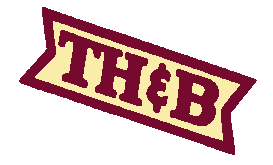 This month’s Classic Trains featured fallen flag is my favourite Canadian railway … I founded the TH&B Railway Historical Society many years ago (you can download a PDF of the first newsletter I did here … I didn’t have access to any TH&B photo I could use in the publication at that point, so it’s pretty much all text and tables). I put together as much information as I had about the railway at that time and printed up a few hundred copies to distribute at a regional railfan event (the CN Lines event in Oakville during October 1997), hoping to find fellow fans of the TH&B (back in those long-distant days when you couldn’t just run a quick search from your web browser, and most people didn’t yet have email addresses). The gamble worked and we had a formal historical society up and running for the following issue. I published the newsletter for five years before finally burning out and handing it over to more capable hands.
This month’s Classic Trains featured fallen flag is my favourite Canadian railway … I founded the TH&B Railway Historical Society many years ago (you can download a PDF of the first newsletter I did here … I didn’t have access to any TH&B photo I could use in the publication at that point, so it’s pretty much all text and tables). I put together as much information as I had about the railway at that time and printed up a few hundred copies to distribute at a regional railfan event (the CN Lines event in Oakville during October 1997), hoping to find fellow fans of the TH&B (back in those long-distant days when you couldn’t just run a quick search from your web browser, and most people didn’t yet have email addresses). The gamble worked and we had a formal historical society up and running for the following issue. I published the newsletter for five years before finally burning out and handing it over to more capable hands.
The society is still in operation, and the newsletter (now called The Ontarian) is mailed out four times per year. Membership information available at the society website.
Greg McDonnell begins the article with a quick look at the TH&B’s early history:
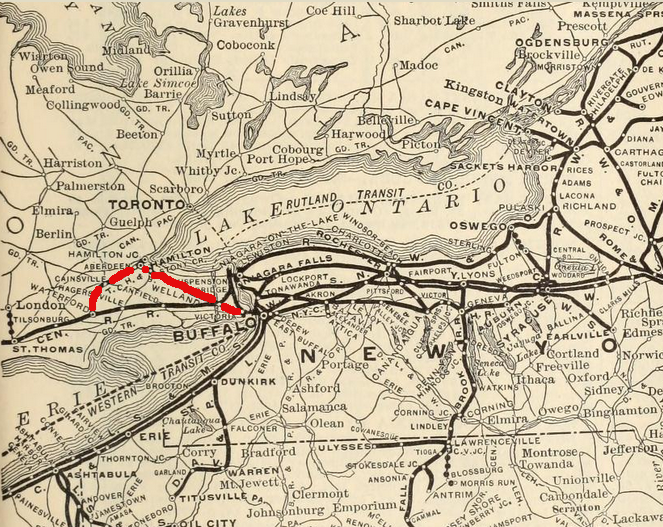
Detail from a map published in The Commercial and Financial Chronicle in 1908. TH&B trackage has been marked in red (not on the original image).
Wikimedia Commons.
Canada, thanks to its two transcontinental giants after 1923, had few small “regional” railroads. One, though, was the 111-mile Toronto, Hamilton & Buffalo Railway, which vanished in 1987.
Little TH&B had a larger-than-life presence that belied the reality of its being merely the southern Ontario stepchild that linked parents New York Central and Canadian Pacific. TH&B never realized its dream of being an independent road linking its three namesake cities, but in its heyday, it did haul sleeping cars from Toronto for New York, Boston, Cleveland, Pittsburgh, and Philadelphia. In 1911, it became the first North American railroad to install Absolute Permissive Block signaling; it erected a splendid art deco station and office tower in Hamilton, Ontario; and it had Canada’s only 2-8-4 steam locomotives, not to mention two ex-NYC Hudsons.
In 1890, even before a rail was laid, TH&B deviated from its chartered intentions, dropping Buffalo from its plans in favor of an eastern terminus and connection with the Canada Southern, a subsidiary of NYC’s Michigan Central, at Welland, Ontario. In 1892, TH&B acquired its first operating trackage, the faltering 18-mile Brantford, Waterloo & Lake Erie, a Brantford–Waterford line that was extending itself to Hamilton.
The original Hunter Street station in Hamilton, replaced in 1929 with the current Art Deco station now operated by GO Transit.
Local History & Archives, Hamilton Public Library via Wikimedia Commons.As crews spiked TH&B rails from Hamilton to Welland, the line’s strategic importance attracted suitors. And not just anyone, for on July 9, 1895, the still-incomplete railway was sold to a consortium headed by two of the most powerful men in North American railroading: NYC’s Cornelius Vanderbilt and CPR’s William Van Horne.
NYC, dividing its holdings with subsidiaries MC and CASO, took a 73% stake in the fledgling bridge line; CP held the remaining 27%, an arrangement that would endure for 80-plus years. TH&B was afforded a considerable measure of autonomy, but parental influence from New York and Montreal gave TH&B its unique international character.
The TH&B Society picks up the history in somewhat more detail (the original draft was mine, but several others have made additions and changes since then):
The next phase of construction was to be the line from Hamilton to Toronto. The surveyed route to Toronto closely paralleled the existing Grand Trunk Railway mainline. In order to avoid construction of a parallel line (and the potential loss of traffic to the competing line), the GTR granted running rights to the Canadian Pacific Railway between Toronto and Hamilton in 1896. That same year the TH&B constructed what became known as the Hamilton Connection between its line and the GTR at Hamilton Junction. The Hamilton Connection was subsequently leased to the CPR and became their physical connection to the TH&B.
In 1897, the TH&B obtained running rights over the Hamilton & Dundas Railway for the provision of freight service into the Town of Dundas. The H&D Railway, a local interurban line, ceased operations in 1923 and the TH&B acquired the former H&D right of way into Dundas to continue freight operations. The line into Dundas was known as the H&D Branch.
In order to tap into Hamilton’s expanding industrial sector, construction began on the Hamilton Belt Line in 1900. The Belt Line expanded with the construction of two additional branch lines in 1911 to allow access to all industrial sectors of the city, many of which were previously serviced exclusively by the GTR. Although the Belt Line was only six miles in length, it contained over 40 miles of yard and industrial sidings and would provide much financial sustenance to the TH&B over the years.
In 1914, the 14-mile Dunnville Subdivision was constructed southward from Smithville to the Town of Dunnville and extended five miles further to the shores of Lake Erie at Port Maitland in 1916. Access to Lake Erie allowed the creation of the TH&B Navigation Co. that operated between Port Maitland and Ashtabula, Ohio, from 1916 until discontinuance in 1932.
The TH&B’s final expansion occurred in 1927 when running rights were awarded over the Canadian National Railways to gain access to the industrial City of Port Colborne.
1935 saw the first abandonment of trackage when the Ridgeville Spur, a small four-mile branch extending off the Welland Subdivision just outside of Welland, was abandoned and the rails were removed in 1936.
The St. Lawrence Seaway Authority completed the construction of the present-day Welland Canal in 1972 resulting in the relocation of several rail lines in the area. The Welland Subdivision was realigned between Fenwick and Welland where a new yard was constructed and operated in conjunction with New York Central’s corporate successor, Penn Central. The new shared facility allowed the closure and removal of the original and independent TH&B and Penn Central operations located within the city. Welland Yard continues to operate today as a Canadian Pacific’s marshalling facility for the Niagara Region.
In 1976, the United States Government amalgamated six bankrupt railroads, including the New York Central’s corporate successor, Penn Central, into a new entity called Conrail. In an effort to reduce debt, Conrail began shedding foreign investments including their controlling interest in the TH&B. In 1977, CP Rail acquired Conrail’s 73% interest giving CP 100% control of the railway.
In 1985, CP Rail and Canadian National jointly acquired the assets of Conrail’s Canada Division, the former Canada Southern Railway. CP Rail acquired exclusive ownership of the eastern end of the line between the TH&B connection at Welland and the international border crossings at Niagara Falls and Fort Erie, Ontario. While CP equipment was used to operate this portion of the line, known as CP CASO, the TH&B provided the managerial and administrative functions on CP Rail’s behalf.
The TH&B would continue to operate as a separate entity until 1987 when it was amalgamated into the Eastern Region of the London Division of CP Rail.
CP Rail abandoned the H&D Branch in 1988 with the Waterford Subdivision following in 1989. Also in that year, CP discontinued operations into Port Colborne, opting not to renew the running rights agreement over the CNR.
Today, the surviving portions of the TH&B, including the Hamilton Belt Line, the former Welland Subdivision and a portion of the Dunnville Subdivision operate as part of Canadian Pacific’s Hamilton Subdivision in CPR’s Southern Ontario Service Area.
July 1, 2020
Toronto Police won’t be facing a 10% budget cut after city council votes down proposal
Chris Selley on the vote by Toronto city councillors to retain the existing budget for the city’s police force at $1.22 billion:
On Monday, Toronto City Council debated and passed a variety of proposed police reforms, the newsiest of which had been asking the department to table a 10-per-cent budget cut for 2021. That idea was voted down 16-8. Further proposed changes included asking the Toronto Police Service for a line-item budget, and subjecting police to the municipal auditor-general’s oversight — utterly revolutionary concepts, you will agree. (Both passed.)
The budget cut might at least have been a useful exercise: It would be interesting to know what the police would and wouldn’t do with $1.1 billion instead of $1.22 billion. If I had been a consensus-seeking councillor on the virtual floor, I might have moved a motion asking the police to table line-item budgets for both — and maybe push for 20 or 30 per cent, too. But the question of the budget sucked up too much oxygen.
That’s certainly understandable. The “defund the police” movement in all its permutations is having a moment. There are North American police departments and police unions that might as well be begging to be disbanded, as much with their banal and petulant misbehaviour as with their needless use of lethal force. A few might even get their wish.
Canadian departments haven’t been begging quite as hard, however, and too many Canadians take false solace in that. When it comes to police-involved fatalities, we fare quite poorly against Western nations other than the one next door. Our accountability mechanisms are, generally speaking, a sick joke; indeed, it seems considerably easier to fire flamboyantly terrible cops in the United States than it does here.
James Forcillo, the Toronto officer who was caught on tape fatally unloading nine shots at 18-year-old Sammy Yatim for no good reason, was on the payroll for two-and-a-half years until his criminal conviction. He was at least suspended. Simon Seguin, the Alberta RCMP officer caught on camera in March rugby-tackling, punching and choking Athabasca Chipewyan First Nation Chief Allan Adam in a dispute over an expired vehicle registration, was at the time awaiting trial for assault!
June 14, 2020
May 30, 2020
David Warren reports from “the High Doganate” (Parkdale, Toronto)
I haven’t lived in Toronto for many years now, but as David Warren highlights in his Essays in Idleness posts, things haven’t changed much in all that time:
We continue to be well-as-can-be-expected, up here in the High Doganate, though stir-crazy, and over-informed about the Batflu (also known as the Kung Flu, or Peking Pox). The housefinches on our balconata persist in their social distancing, and at street level, the dogs continue to walk their masters. The brave, without a dog, may go out, without a mask, if they can stand up to the Virtue Signallers (or as I prefer to call them, the Smugly Foocklings). But that is in the respectable parts of town, at least three miles away, where designer masks are now de rigueur. There are plenty of trolleys, but they travel mostly empty. This is because the transit authorities are “committed to keeping customers and staff safe.” Knowing that most of the public health measures are fraudulent, and/or counter-productive, is not helpful to one’s peace of mind.
These measures would include the vast public doles which our guvmints have been generating, electronically. It could be taken as pay, for those who’d otherwise riot. Eventually, the guvmints hope to electronically rake it back, both from those who were paid and those who were not, in the form of much extended taxes. To understand the Batflu response, is to understand the welcome it gave to bureaucrats and their patrons, wherever the Left won the last election. They do not surrender such powers lightly.
Most of the people I hang out with are their particular targets — from freelance giguers to flea marketeers to those with religious vocations. Such people naturally resist the Kafkaesque arrangements our progressives relish and demand. The Batflu “crisis” put as many as possible of these statistically inconvenient people out of work. (Many are compulsive tax-evaders, after all!) These “little people,” especially those trying to support uncool, old-fashioned, frankly heterosexual families, are the ones for whom I most pray, as they and their children face the “green” future, which will exclude them in the name of “diversity.”
But also I think of the vast slave armies, in the “service economy,” with their idiotizing jobs, from flipping hamburgers to humping boxes in the Amazon warehouse — pinned to their minimum wages until their functions can be mechanized. (When they unionize, this happens faster.)
The “professional classes,” who can work from home, because they do nothing of value, needn’t go months without revenue, while their debts are piling up. They sneer at those who oppose a lockdown, that is perfectly comfortable for the professional classes, who at worst save money by dining in, or must order what they want through Amazon.
May 27, 2020
Comprehensive planning and communication failures are the hallmark of Canada’s response to the Wuhan coronavirus epidemic
Chris Selley understands why the internet shaming community is dunking on the apparently large number of people who crowded into Toronto’s Trinity-Bellwoods park over the weekend but doesn’t feel the need to join them:
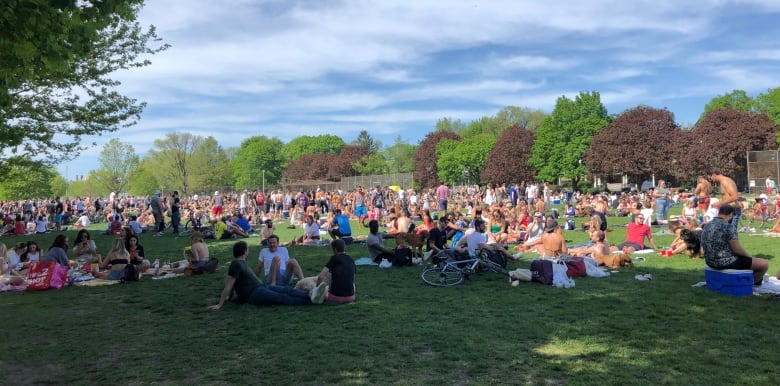
Screencap from a CBC report on unorganized social distancing civil disobedience at Toronto’s Trinity-Bellwoods Park on Saturday.
Human beings need to get outside and socialize. They have breaking points, and many are very understandably at them. (An aside: I can’t help noticing how many people venting fury on social media have also treated their followers to images of their back-patio office setups, or updates on their new vegetable gardens.) There is also no surplus of parkland in downtown Toronto. Photographic evidence suggests other neighbourhood greenspaces were very busy as well, though not to the same extent.
In other words, this was always going to happen. So the time is long past when politicians like Ontario Premier Doug Ford or Toronto Mayor John Tory should be able to cluck their tongues or stamp their feet at such people and expect their constituents to nod along in solidarity.
Jurisdictions facing significant COVID-19 outbreaks had one finite period of time in which to try to knock this bastard virus down. After that period of time, the socioeconomic costs of the shutdown would become unsustainable and the economy would have to reopen. We’re seeing that happen all over the world right now: in essence, countries are rolling the dice. If they did well in the allotted time, fewer people will have to die in the name of getting back to normal.
The federal, Ontario and Toronto governments have not done well — certainly not to any extent that justifies their leaders’ soaring approval ratings.
The feds have been abysmal since even before Day One, with Chief Public Health Officer Theresa Tam actively downplaying the threat. We shipped 16 tonnes of personal protective equipment to China with no viable plan to replace it. Whatever you think of travel bans as an anti-pandemic measure, the government undermined its own credibility by insisting they don’t work, then changing course 180 degrees over the course of a weekend. Most astonishingly, the feds at first utterly failed to communicate the most basic advice to returning travellers — advice such as “don’t stop for groceries or at the pharmacy on your way home.”
And Tam’s initial ludicrous “masks don’t work” narrative has grudgingly evolved to support the use of non-medical masks “where social distancing is not possible.” But the federal government’s official advice on “safe shopping” — indeed the entire web page titled “COVID-19 and food safety” — still doesn’t mention masks, even as the berth shoppers give each other seems to narrow by the day. This anti-mask stance seems to be ideological, bred in the bone.
May 9, 2020
Sidewalk Labs pulls out of their Panopticon-on-the-harbour project in Toronto
Chris Selley clearly hoped the Google-affiliated Sidewalk Labs would turn out to be a benign addition to the Waterfront:
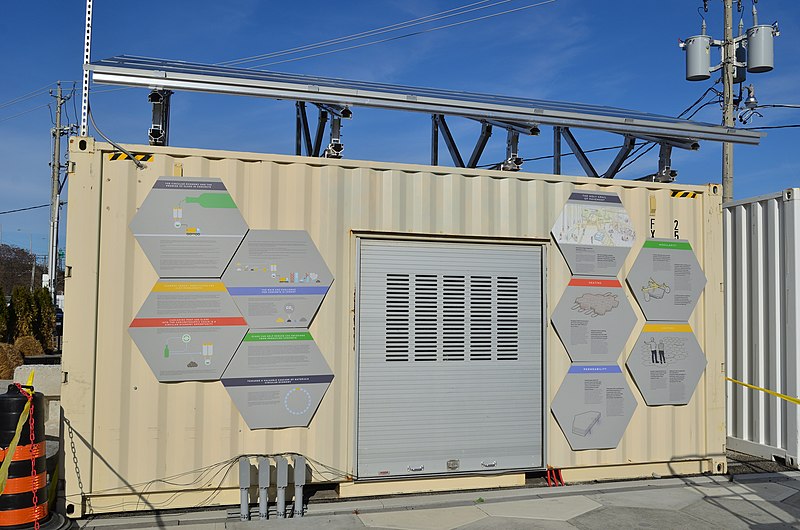
Sidewalk Labs Toronto demo, 17 April 2019.
Photo by Raysonho @ Open Grid Scheduler / Scalable Grid Engine via Wikimedia Commons.
It would be a mixed-income and family-friendly community: 20 per cent low-income and 20 per cent middle-income, with 40 per cent of units two-bedrooms or larger. It would be fantastically energy-efficient. It would discourage waste production using “pay-as-you-throw chutes” leading to pneumatic tubes that would rocket your trash, recycling and organic waste to the proper facilities.
Some of the details seemed a bit far-fetched, and some of the ideas came to naught at the design stage. But the Google family of companies is not known for wretched failure. To many Torontonians, it was a compelling vision.
Unfortunately, a lot of the very people it was designed to impress hated the hell out of it.
[…]
So there is blame to go around — and to be clear, no one is officially blaming the city bureaucracy or the project’s opponents for scuppering the deal. But the fact is, Sidewalk simply wandered into the wrong saloon. Toronto is an intensely conservative city in the strictest sense of the word. Its establishment doesn’t even believe things that work in other cities would work here. It’s why we pilot-project food carts to death, instead of just allowing food carts. It’s why we’re closing parks and crowding people on sidewalks during the pandemic, instead of following other the lead of other cities and dedicating roads to safely spaced pedestrians and cyclists. When Ontario loosened alcohol regulations, many Torontonians predicted tailgate parties and picnics-with-wine would lead to mayhem — and they really, really meant it.
Sidewalk wanted to do something no other city had ever done. You can imagine the terror and confusion it sowed. And that was over 12 acres — six football fields. Toronto has a great many things going for it. I have argued in the past that its conservatism, broadly speaking, has served it very well. But Sidewalk reminded us what we trade for that. If we can’t take a bit of a chance on 12 acres, it doesn’t bode at all well for the many hundreds of other acres in this city that have been begging for redevelopment my entire lifetime — not if we want them to be at all innovative or memorable, anyway.
April 24, 2020
QotD: The best way to see Toronto (aka “Greater Parkdale”)
Asked by a visitor what is the best way to see Greater Parkdale, I replied, on your back in an ambulance. I was serious, of course. At street level, transient franchise shopfronts bear no architectural relation to the older buildings they have been stuck on. But from a reclining position, only the unmodified upper storeys can be seen, yet nothing above the second or third (thus deleting most of the appalling highrises). The city thus retains something of its fine and fusty Edwardian provincial order. Prone in this way, one might drive for miles through repulsively glitzy shopping districts, without seeing what’s been added since the Great War.
David Warren, “The scandal of interiors”, Essays in Idleness, 2018-01-25.
March 26, 2020
David Warren on the situation in Parkdale
David Warren provides a glimpse of what life is like in the Toronto neighbourhood of Parkdale during the Wuhan Coronavirus epidemic:
Is gentle reader bored with pathogens yet? At some point in the proximate future, death will lose its sting. While there are plausible economic reasons for people to return to work, there is also a dark secret. The most restless society since the invention of restlessness cannot cope with “downtime.” This is what gives me my monopoly on Idleness. Without the “events” which help to distinguish one day from another, we will need to start a war.
Had we books, and to have developed the habit of using them, we might read history instead; and even a bit of poetry on the side. But now, at loose ends, we are inspired to do something. Also, please note, the doctrine of original sin. I’m a big fan.
My political dogma has surely been established by now. I am against “doing” anything. Fight for a world in which nothing exciting happens, other than the pursuit of beauty, goodness, and truth. Fight relentlessly — by example.
Here in Parkdale, Toronto’s go-to centre for the criminally insane, there is always entertainment. From my balconata I can spy several half-way houses, and for variety, a Tibetan temple. The streets get quieter every day, especially the throb of the superhighways. It has been softening, as the economy bleeds away; and there are clear days with no contrails in the sky.
The “Green Nude Eel” is being accomplished. Superficially, this might seem like a good thing.
But because Parkdale has been unable to start a war with our bourgeois neighbour — Liberty Village, where the childless young professionals live in sterilized apartment blocks — we have had to look for excitement elsewhere. By calling 9-1-1 frequently, the Vallishortensians (demonym for “Parkdale”) are able to keep the sirens blaring, and little knots of emergency vehicles collecting, to no definable purpose here and there. Due to my Scottish genetic endowment, I follow these skits as I would a taxi-meter: How much have we cost the taxpayers today?
March 5, 2020
“Maybe … Trump’s victory caused an unusual number of spontaneous abortions in Ontario”
Colby Cosh on the recently published findings of a p-hacking conspiracy study on how the election of President Donald Trump was reflected in the birth ratio of liberals in Ontario:
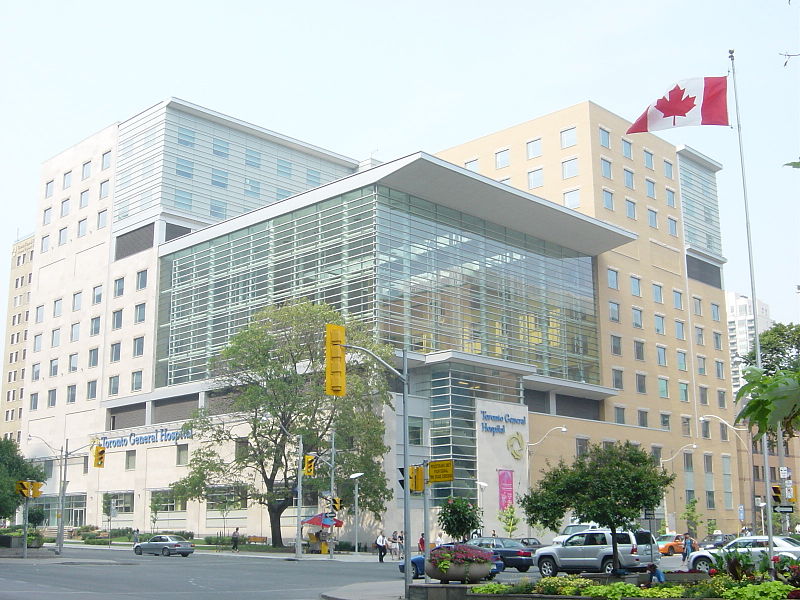
Front view of Toronto General Hospital in 2005. The new wing, as shown in the photograph, was completed in 2002.
Photo via Wikimedia Commons.
On Monday there came a surprising piece of science news from BMJ Open, an open-access title affiliated with the British Medical Journal. It seems two researchers from Mount Sinai Hospital in Toronto, an endocrinologist and a statistician, have convinced themselves that the election of Donald Trump to the American presidency in November 2016 had a nerve-shattering effect on Ontario. The province of Ontario, that is, not the Los Angeles suburb.
Trump’s victory, according to the researchers, was so awful that, like a war or a disaster, it briefly altered the sex ratio in live births in the province. This is, I should say, a fairly well-established effect of extreme social traumas. When mothers experience physiological stress, the uterine environment becomes less hospitable, and male fetuses, more vulnerable to such changes, become less likely to survive pregnancy. (This makes sense from a Darwinian standpoint, because girls are more valuable than boys in replacing population after a calamity.)
In 2020 nobody should need me to say that a cute, counterintuitive scientific “result” like this, appearing in the newspapers on literally the day of its publication, should be greeted with extreme skepticism. The sex ratio at birth, always expressed in medical literature as a ratio of boys to girls, tends to hover around 1.06 under natural circumstances. (Even in an advanced civilization, things even out within the age cohort over the next 20 years as the lads explore dirt bikes, rock fights, and roofs.)
The Mount Sinai researchers, Ravi Retnakaran and Chang Ye, had records of the sexes of all children born in Ontario from April 2010 to October 2017. Even in a place as large as Ontario, the ratio naturally bounces around randomly between 1.1 and 1.0, and there are seasonal effects that the duo corrected for.
There is no obvious signature of a Trump effect in a scatterplot of the adjusted data, which serves as a warning that the effect being claimed may be an artifact of analysis. But when you apply “segmented regression” using the same parameters as Retnakaran and Ye, you find that the (unadjusted) ratio dipped to 1.03 in March 2017, the fifth month after Trump’s win, and then climbed to 1.08 in June and July before reverting to the long-term norm.
February 9, 2020
QotD: Toronto and Vancouver
As a resident of Toronto, I am a bit reluctant to write about Vancouver. Torontonians and Vancouverites don’t get along very well, even though it is only the regular infusion of Torontonians that keeps Vancouver from losing its status as a city. Scratch a Vancouverite — not that it’s a practice I advocate — and chances are you’ll find an expatriate Hogtowner. Like religious converts, these newfound westerners are the most wild-eyed believers in the mythology, the most likely to promulgate the idea that Vancouverites routinely go skiing in the morning and sailing in the afternoon. There is no recorded instance of anyone actually skiing and sailing in the same day, but the belief that it can be done holds a lot of people in thrall. In fact Vancouver’s traffic nowadays makes such a practice unlikely, and in any case Vancouverites don’t have the time for it, having to work like Torontonians to make the payments on their leaky condos.
What the residents of these two cities have in common is an irrational smugness, an utterly unfounded belief that they are living in the best city in the world. We grasp desperately at warm comments from visitors, keen to be noticed by outsiders. The best of all is when we get acknowledged by international studies that rank the cities of the world. These surveys invariably come up with widely divergent results, and sometimes Toronto does well and other times it’s Vancouver.
Nicholas Pashley, Notes on a Beermat: Drinking and Why It’s Necessary, 2001.




